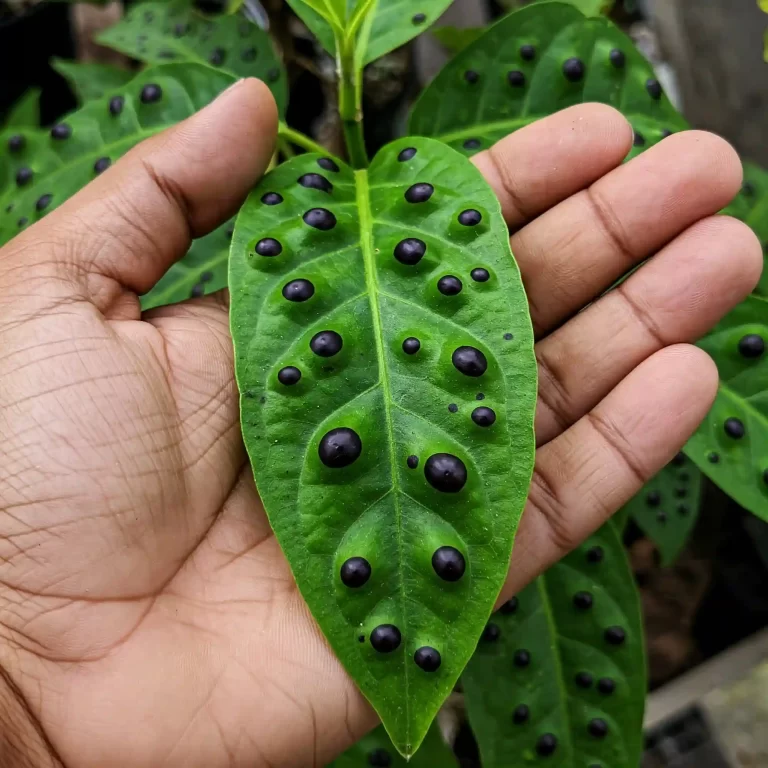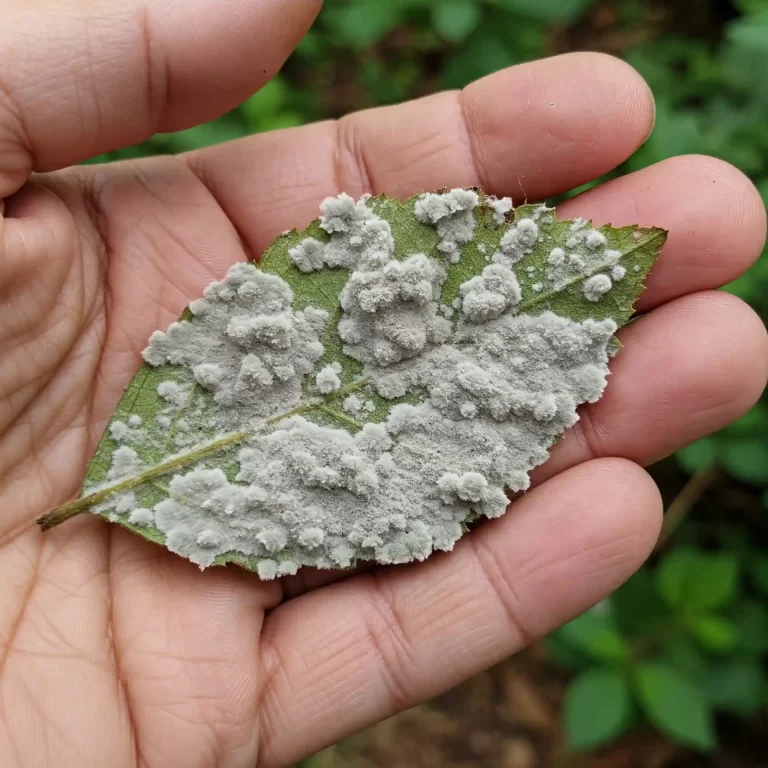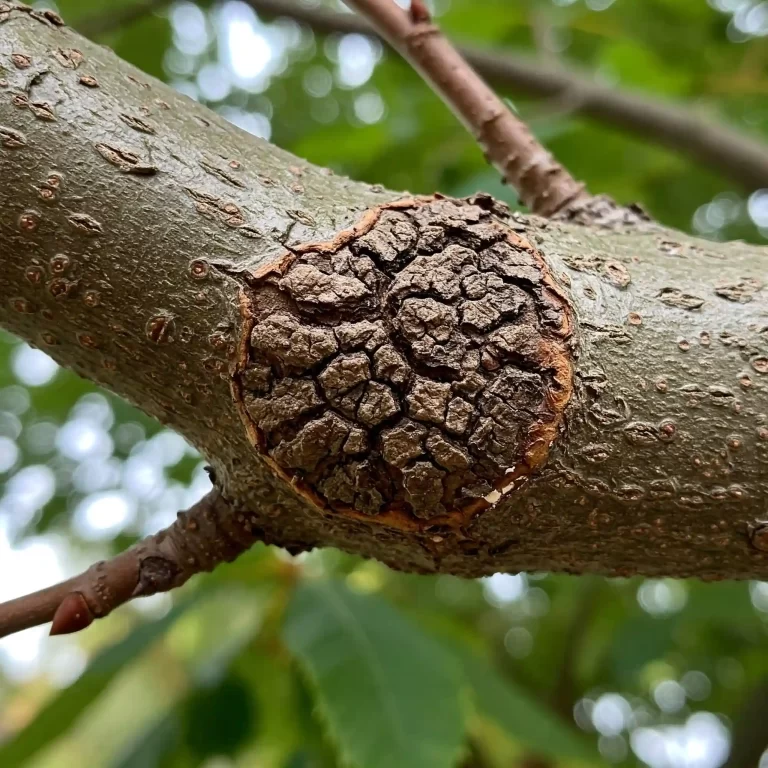Have you ever felt that sinking feeling when you notice brown spots appearing on your beloved plants? It’s frustrating, isn’t it? You invest time and effort into nurturing them, only to see these unwelcome blemishes appear. I’ve been there too, countless times. But don’t worry, you’re not alone, and there’s hope! In this comprehensive guide, I’ll share my experience and knowledge to help you understand the common causes of brown spots, how to identify them, and, most importantly, how to get your green friends back to their vibrant, healthy selves. Let’s dive in and uncover the secrets to spotless plants!
1. Decoding the Mystery of Brown Spots: What Are They?
Brown spots are essentially areas of dead or dying plant tissue. They’re like the plant’s way of telling you something’s not quite right. These spots can manifest in a variety of ways. They can be small and pinpoint-sized, or they can be large and irregularly shaped. The color can range from a light tan to a dark, almost black hue. You might find them clustered together or scattered across the leaf surface. Sometimes, they’re even surrounded by a yellow halo.
Understanding the characteristics of the spots is crucial for diagnosing the underlying problem. Think of it like a detective trying to solve a case – you need to gather all the clues to figure out what’s really going on. For instance, small, circular spots with a dark border often suggest a fungal issue, while larger, irregular spots might point to a bacterial infection or an environmental stressor.
It’s also important to consider where the brown spots appear on the plant. Are they on the older, lower leaves, or the newer growth at the top? Are they on the edges of the leaves, or in the center? Each of these locations can provide valuable insights. For example, brown spots on older leaves often indicate a nutrient deficiency, as the plant is pulling nutrients from these older leaves to support new growth. On the other hand, brown spots on new growth might suggest a pest problem or an environmental issue.
I remember one instance where my tomato plants were developing brown spots on the lower leaves. After some research, I realized it was a potassium deficiency. By adding a potassium-rich fertilizer, I was able to address the deficiency and save my tomato crop. This experience taught me the importance of observing the location of brown spots and using that information to guide my diagnosis and treatment.
Furthermore, consider the overall health of the plant. Is it wilting? Are the leaves yellowing? Is the plant growing slowly? These additional symptoms can provide a more complete picture of the problem. A plant with brown spots and wilting leaves might be suffering from a root issue, while a plant with brown spots and yellowing leaves could have a nutrient deficiency or a disease. I’ve found that keeping a plant journal can be incredibly helpful in tracking these symptoms over time. You can note when the brown spots first appeared, how they’ve changed, and any other symptoms you observe. This information can be invaluable when trying to diagnose a plant problem. Remember, you’re not just treating the brown spots; you’re treating the underlying cause. And to do that effectively, you need to understand the whole story.
2. The Usual Suspects: Common Causes of Brown Spots
Now that we understand what brown spots are, let’s delve into the most common culprits behind their appearance. Think of these as the “usual suspects” in our plant detective story.
- Fungal Diseases: Fungi are notorious for causing a variety of plant problems, and brown spots are a common symptom. Some of the most prevalent fungal diseases include:
- Septoria Leaf Spot: This disease often manifests as small, brown spots with dark borders on leaves. It’s particularly common on tomatoes and other members of the nightshade family.
- Alternaria Leaf Spot: This fungus causes dark, often target-shaped spots on leaves. It can affect a wide range of plants, including vegetables, flowers, and trees.
- Anthracnose: This disease can cause a variety of symptoms, including brown spots, cankers, and leaf blight. It affects many plants, including maples, oaks, and cucurbits.
- Powdery Mildew: While often appearing as a white, powdery coating on leaves, powdery mildew can sometimes cause brown spots, especially in severe cases.
- Bacterial Infections: Bacteria can also cause brown spots on plants. One common example is:
- Bacterial Leaf Spot: This disease typically causes small, water-soaked spots on leaves, which may eventually turn brown. It can affect a wide range of plants, including tomatoes, peppers, and beans.
- Pest Infestations: Certain pests can cause damage that mimics brown spots. For example:
- Aphids: These tiny insects can feed on plant sap, causing leaves to become discolored and distorted.
- Spider Mites: These microscopic pests can also cause leaf discoloration and stippling, which can resemble brown spots.
- Thrips: These small, slender insects can feed on plant tissue, leaving behind silvery or brown spots.
- Nutrient Deficiencies: While not always causing brown spots directly, nutrient deficiencies can weaken plants, making them more susceptible to disease and other problems. Some common nutrient deficiencies that can contribute to discoloration include:
- Iron Deficiency: Can cause yellowing between leaf veins, which can sometimes appear as brown spots.
- Potassium Deficiency: Can lead to brown spots on leaf margins and tip burn.
- Phosphorus Deficiency: Can cause stunted growth and purplish-brown discoloration on leaves.
- Environmental Stress: Plants are sensitive to their environment. Factors like overwatering, underwatering, extreme temperatures, and sun scorch can all stress plants and make them more susceptible to disease and other problems.
- Overwatering: Can lead to root rot, which can cause leaves to turn brown and wilt.
- Underwatering: Can cause leaves to wilt and turn brown, especially during hot, dry periods.
- Sun Scorch: Too much direct sunlight can burn leaves, causing brown, crispy spots.
Understanding these common causes is crucial for effectively diagnosing and treating brown spots on your plants. Remember, it’s often a combination of factors that contribute to plant problems. By carefully observing your plants and considering their overall health and growing conditions, you can start to piece together the puzzle and determine the underlying cause of those pesky brown spots.
3. Brown Spots on Specific Plants: A Closer Look
While the general causes of brown spots are similar across many plants, some species are more susceptible to certain issues. Let’s take a closer look at a few examples:
- Roses: Rose bushes are particularly prone to a fungal disease called black spot. This disease causes dark, circular spots on the leaves, which can eventually lead to defoliation. Black spot thrives in humid conditions and can be difficult to control.
- Tomatoes: Tomatoes are susceptible to several fungal diseases, including Septoria leaf spot and early blight. Septoria leaf spot causes small, brown spots with dark centers on the leaves, while early blight results in large, dark brown spots with a bull’s-eye pattern. Both diseases can significantly reduce tomato yields.
- Orchids: These delicate plants can be susceptible to a variety of issues, including fungal and bacterial infections. Brown spots on orchid leaves can be caused by various factors, including improper watering, poor air circulation, and pests.
These are just a few examples of how brown spots can manifest on different plants. It’s important to remember that each plant species has its own unique set of challenges and susceptibilities. By understanding the specific needs and vulnerabilities of your plants, you can better diagnose and address any problems that arise.
In addition to the specific examples mentioned above, I’ve also encountered brown spots on a variety of other plants, including:
- Fiddle Leaf Figs: These popular houseplants are often susceptible to brown leaf tips, which can be caused by overwatering, underwatering, or low humidity.
- Monstera Deliciosa: This trendy houseplant can develop brown spots on its leaves due to various factors, including overwatering, underwatering, and exposure to cold temperatures.
- Peace Lilies: These elegant plants can develop brown leaf tips due to overwatering, low humidity, or fluoride exposure.
By familiarizing yourself with the specific challenges faced by your plants, you can take proactive steps to prevent and address brown spots before they become a serious problem. Remember, every plant is unique, and understanding its specific needs is crucial for its overall health and well-being.
4. Plant Care Focus: Prevention is Key
The best approach to dealing with brown spots is to prevent them from occurring in the first place. Think of it as proactive plant care. Here are some key strategies to keep your plants healthy and free from brown spots:
- Watering Wisely: One of the most crucial aspects of plant care is proper watering. Overwatering can lead to root rot, which can weaken plants and make them more susceptible to disease, including brown spots. Conversely, underwatering can cause stress and lead to leaf discoloration and wilting. It’s important to find the right balance for each plant, considering factors such as the type of plant, the size of the pot, and the soil type. As a general rule, it’s better to err on the side of underwatering than overwatering.
- Proper Nutrition: Just like humans, plants need a balanced diet to thrive. Nutrient deficiencies can weaken plants, making them more susceptible to diseases and pests, which can lead to brown spots. Using a balanced fertilizer formulated for your specific plants can help ensure they receive the essential nutrients they need to stay healthy. However, be cautious not to over-fertilize, as this can also damage plants.
- Good Air Circulation: Adequate air circulation around plants is essential for preventing fungal diseases, which thrive in humid conditions. Ensure that there is enough space between plants to allow for proper airflow. You can also improve air circulation by gently pruning away crowded or overlapping branches.
- Sanitation: Good sanitation practices can help prevent the spread of diseases. Regularly remove any fallen leaves or debris from around your plants. These can harbor pathogens and attract pests. Keep your gardening tools clean and disinfected between uses to prevent the spread of diseases from one plant to another.
- Choose Resistant Varieties: When selecting plants for your garden, choose varieties that are known to be resistant to common diseases in your area. This can help minimize the risk of encountering problems like brown spots.
By implementing these preventative measures, you can create a healthy environment for your plants to thrive, minimizing the risk of encountering those pesky brown spots. Remember, prevention is always better than cure when it comes to plant health.
5. Plant Care Focus: Control and Management
Even with the best preventative measures in place, brown spots may still appear. When this happens, it’s important to take swift and decisive action to control the problem and prevent it from spreading. Here’s a step-by-step approach to managing brown spots:
- Identify the Problem: As we discussed earlier, accurately identifying the cause of the brown spots is crucial for effective treatment. Carefully examine the spots, noting their size, shape, color, and location on the plant. Consider the overall health of the plant and any other symptoms you observe, such as wilting, yellowing, or stunted growth.
- Isolate Affected Plants: If you suspect a fungal or bacterial infection, isolate the affected plant from healthy ones to prevent the disease from spreading. This will help contain the problem and protect your other plants.
- Treat with Appropriate Solutions: The treatment will vary depending on the cause of the brown spots.
- Fungal Diseases: You may need to use a fungicide to control fungal diseases. There are a variety of fungicides available, both chemical and organic. Always read and follow the product label instructions carefully.
- Bacterial Infections: Bacterial infections are generally more difficult to control. In some cases, bactericides may be effective. However, for severe infections, it may be necessary to remove and destroy the affected plant parts.
- Pest Infestations: If pests are the culprit, you may need to use an insecticide. Again, choose an appropriate insecticide and follow the label instructions carefully. Consider using organic pest control methods, such as insecticidal soap or neem oil, whenever possible.
- Nutrient Deficiencies: Correcting nutrient deficiencies often involves applying the appropriate fertilizer. For example, if your plants are deficient in iron, you can use an iron chelate fertilizer.
- Environmental Stress: Address any environmental stressors, such as overwatering or underwatering, by adjusting your watering practices.
- Monitor and Adjust: Keep a close eye on your plants after treatment. If the problem persists, you may need to adjust your treatment strategy or seek further advice from a local gardening expert.
Remember, patience is key when dealing with plant problems. It may take time to see results, so don’t get discouraged if you don’t see an immediate improvement. By taking a proactive approach and carefully monitoring your plants, you can effectively manage brown spots and keep your garden thriving.
6. Plant Care Focus: Protection and Stop the Spread
In addition to the control measures discussed earlier, there are several proactive steps you can take to protect your plants from brown spots and prevent their spread. These preventative measures focus on creating a healthy environment for your plants to thrive.
- Mulching: Applying a layer of mulch around the base of your plants can be highly beneficial in preventing the spread of soil-borne diseases. Mulch helps to maintain soil moisture, regulate soil temperature, and suppress weed growth. It also creates a physical barrier between the soil and the plant, reducing the risk of soil-borne pathogens splashing onto the leaves.
- Regular Monitoring: Regular inspection of your plants is crucial for early detection of any problems, including brown spots. This allows you to take prompt action to address the issue before it spreads further. Make a habit of checking your plants regularly, paying close attention to the leaves, stems, and overall health.
- Healthy Soil: Healthy soil is the foundation for healthy plants. Maintaining good soil health can help to strengthen your plants’ natural defenses against diseases. This can be achieved by adding organic matter to the soil, such as compost or well-rotted manure. Organic matter improves soil structure, drainage, and nutrient availability, creating a more conducive environment for plant growth.
By implementing these preventative measures and taking proactive steps to control and manage brown spots, you can significantly reduce the risk of these problems affecting your plants. Remember, a healthy garden starts with healthy soil and a proactive approach to plant care.
7. FAQs: Addressing Your Brown Spot Concerns
I understand that you might have some lingering questions about brown spots. Here are some of the most frequently asked questions I encounter:
- Q: How do I know if the brown spots are from overwatering or a fungal infection?
A: This can be tricky to determine, but there are a few clues to look for. Overwatering often leads to soft, mushy brown spots and may be accompanied by other symptoms like wilting or yellowing leaves. Fungal infections, on the other hand, often result in more defined, circular spots with a dark border.
- Q: Are brown spots on plant leaves harmful to humans or pets?
A: In most cases, brown spots themselves are not directly harmful to humans or pets. However, the underlying cause of the brown spots could pose a risk. For example, if the brown spots are caused by a fungal disease, some fungicides can be harmful if ingested. If you suspect a pesticide or other toxic substance is involved, it’s best to keep pets and children away from the affected plants.
- Q: Will brown spots kill my plants if I don’t treat them?
A: The impact of brown spots on plant health varies depending on the severity of the problem and the underlying cause. In some cases, minor brown spots may not significantly harm the plant. However, if the problem is left unchecked, it can weaken the plant, making it more susceptible to other issues and potentially leading to its demise.
- Q: How quickly does brown spot spread on plants in a garden?
A: The rate of spread depends on several factors, including the type of disease, environmental conditions, and the plant species. Fungal diseases, in particular, can spread rapidly in warm, humid conditions. Pests can also quickly multiply and spread throughout a garden.
- Q: Can I save my plant if it has severe brown spot damage?
A: In some cases, even with severe brown spot damage, it may be possible to save your plant. This will depend on the extent of the damage and the overall health of the plant. If the damage is limited to a few leaves, you can try removing the affected leaves and providing appropriate treatment. However, if the plant is severely affected, it may be necessary to remove and destroy the plant to prevent the spread of disease.
- Q: My tomato leaves have brown spots. Can I still eat the tomatoes?
A: If the brown spots are caused by a fungal disease, it’s generally best to avoid eating the tomatoes from the affected plant. Some fungal diseases can produce toxins that are harmful to humans. If the brown spots are caused by other factors, such as nutrient deficiencies or minor pest damage, the tomatoes may still be safe to eat. However, it’s always best to err on the side of caution and discard any tomatoes that show signs of disease.
I hope this comprehensive guide has been helpful. If you have any further questions or encounter any specific plant problems, feel free to reach out to me. Happy gardening!




